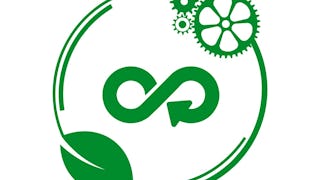Design systems are critical for ensuring scalability, consistency, and efficiency in modern digital products. This course equips learners with the knowledge and strategies to build sustainable design practices that grow with organizational needs.


Recommended experience
What you'll learn
Define the role of design systems in product and team efficiency
Identify foundational components of scalable design systems
Create a system strategy that balances design, code, and people
Skills you'll gain
- Style Guides
- Systems Design
- Prompt Patterns
- System Programming
- Software Design
- User Interface and User Experience (UI/UX) Design
- Prototyping
- Usability
- Agile Methodology
- Design and Product
- Usability Testing
- UI/UX Research
- Product Testing
- Information Architecture
- Scalability
- Design Software
- UI Components
- Design Research
- Design
- Key Performance Indicators (KPIs)
Details to know

Add to your LinkedIn profile
November 2025
10 assignments
See how employees at top companies are mastering in-demand skills

There are 10 modules in this course
In this section, we explore the role of design systems in ensuring consistent user interfaces across platforms, enhancing team collaboration, and supporting scalable product development. Key concepts include standardized components, cross-platform consistency, and long-term maintainability, with practical applications in improving efficiency and user experience.
What's included
2 videos2 readings1 assignment
In this section, we explore design systems as interconnected ecosystems and ongoing processes that support digital collaboration. Key concepts include their multifaceted nature, components like style guides and component libraries, and their role in fostering consistency and scalability across teams.
What's included
1 video1 reading1 assignment
In this section, we explore the essential components of design systems, including UI kits, component libraries, guidelines, and design tokens, and how they enable consistent digital experiences. We compare component libraries with design systems, emphasizing their roles in connecting digital ecosystems and facilitating efficient development across platforms.
What's included
1 video5 readings1 assignment
In this section, we examine why traditional design system adoption strategies often fail, focusing on the challenges of securing buy-in and creating practical, reusable components. We highlight the gap between idealized processes and real-world implementation, emphasizing the need for sustainable, team-driven approaches to ensure long-term success.
What's included
1 video1 reading1 assignment
In this section, we explore how to begin and maintain a design system by testing it through real product work. The approach emphasizes using product-based pilots to validate design system concepts, refine them based on outcomes, and ensure scalability and usability in practical scenarios.
What's included
1 video9 readings1 assignment
In this section, we explore design system governance frameworks and contribution workflows, emphasizing real-world application of open source models to improve team collaboration and clarity. Key concepts include defining roles, analyzing workflows, and aligning responsibilities to enhance contribution and maintain consistency in design systems.
What's included
1 video4 readings1 assignment
In this section, we explore how to apply Agile principles to design system workflows, emphasizing the importance of prioritizing working software over comprehensive documentation. Key concepts include analyzing team roles, understanding documentation practices, and focusing on delivering functional tools that provide immediate value to users.
What's included
1 video6 readings1 assignment
In this section, we examine the evolution of advertising from rigid processes to collaborative frameworks, emphasizing the impact of teamwork and shared vision. Key concepts include the Hot Potato method, creative team dynamics, and historical case studies like Lee Hats and Volkswagen's 'Lemon' campaign. The focus is on how mutual respect and interdisciplinary collaboration drive innovation, offering practical insights for modern creative workflows.
What's included
1 video6 readings1 assignment
In this section, we explore how to establish meaningful success metrics for design systems by implementing OKRs and analyzing team motivation through autonomy and purpose. We focus on creating measurable goals, tracking user impact, and aligning organizational objectives to ensure long-term system success and team engagement.
What's included
1 video4 readings1 assignment
In this section, we explore how to structure design systems using user-centric layouts and thematic organization, drawing parallels to a LEGO store's curated display. The content emphasizes creating modular components for scalable reuse, enhancing usability through real-world analogies and practical design principles.
What's included
1 video2 readings1 assignment
Instructor

Offered by
Explore more from Design and Product
 Status: Free Trial
Status: Free TrialUniversity of Colorado Boulder
Why people choose Coursera for their career





Open new doors with Coursera Plus
Unlimited access to 10,000+ world-class courses, hands-on projects, and job-ready certificate programs - all included in your subscription
Advance your career with an online degree
Earn a degree from world-class universities - 100% online
Join over 3,400 global companies that choose Coursera for Business
Upskill your employees to excel in the digital economy
Frequently asked questions
Yes, you can preview the first video and view the syllabus before you enroll. You must purchase the course to access content not included in the preview.
If you decide to enroll in the course before the session start date, you will have access to all of the lecture videos and readings for the course. You’ll be able to submit assignments once the session starts.
Once you enroll and your session begins, you will have access to all videos and other resources, including reading items and the course discussion forum. You’ll be able to view and submit practice assessments, and complete required graded assignments to earn a grade and a Course Certificate.
More questions
Financial aid available,




